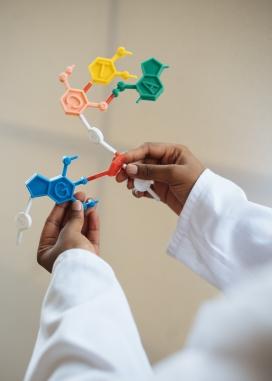Cracking the Code: A Science Media - Research Collaboration
Research–practice partnerships (RPPs) involve close work bridging academic and practice-based interests to grapple with pressing needs, grand challenges, and unanswered questions. There are many benefits to a research–practice partnership, as these collaborations have the potential to improve the research itself and have long-lasting impacts on practice.
Recently, William T. Grant Foundation put forward a framework for evaluating research–practice partnerships, noting the importance of five dimensions for successful research–practice partnerships: (1) building trust between partners, (2) ensuring that the research is rigorous, (3) supporting the practice-based organization, (4) generating knowledge that can inform practice, and (5) building capacity for the practice-based organization’s success (Henrick, Cobb, Penuel, Jackson, & Clark, 2017).
Funders, as well as participating practitioners and researchers, often underestimate the energy and resources needed to collaborate on a study, especially in multifaceted and complex research areas. The process can be challenging and time-consuming, but it makes RPP work both nuanced and rewarding, as project teams learn about each other and adapt in various ways. For the researchers, this means understanding the design process and balancing data collection, analyses, and scientific writing with time spent on productive collaboration. For the practitioners, it means understanding the research process and integrating it into ongoing organizational agendas, activities, and timelines.

A recent large investment by the National Science Foundation (NSF) in an RPP focusing on science communication and science media is the now-completed Cracking the Code project. This three-year Innovations in Development project, funded through the NSF Advancing Informal STEM Learning (AISL) program, brought together science communication researchers from Texas Tech and Yale universities with science media producers and journalists from KQED, a public media company serving the Northern California area.
The coronavirus pandemic and ongoing, pronounced climate disasters have, in a remarkably short period of time, dramatically changed the way media outlets cover news, especially science news. As a result of these and other recent trends, research in the field of science communication is on the rise. Science communication is a dynamic, interdisciplinary field of research that draws from a wide range of disciplines and encompasses a broad spectrum of scientific approaches. While the volume of science communication research has increased, and the benefits from sharing knowledge between science media practitioners and researchers should be obvious, surprisingly there have been relatively few formal collaborations between these two groups.
This collaboration has produced a wealth of findings that will be of great interest to the study and practice of science media and science communication research alike. Equally important, our research and evaluation firm Rockman et al conducted a rigorous process evaluation that has provided insights into the opportunities and challenges of this unique RPP. The findings may be of tremendous value to science (and other) media organizations and research institutions that are considering this type of collaboration.
I have distilled some of the key findings and lessons learned from the process evaluation into a multi-part blog series entitled “Cracking the Code - A Science Media-Research Collaboration.” The series is published on Medium and the KQED Cracking the Code project site.